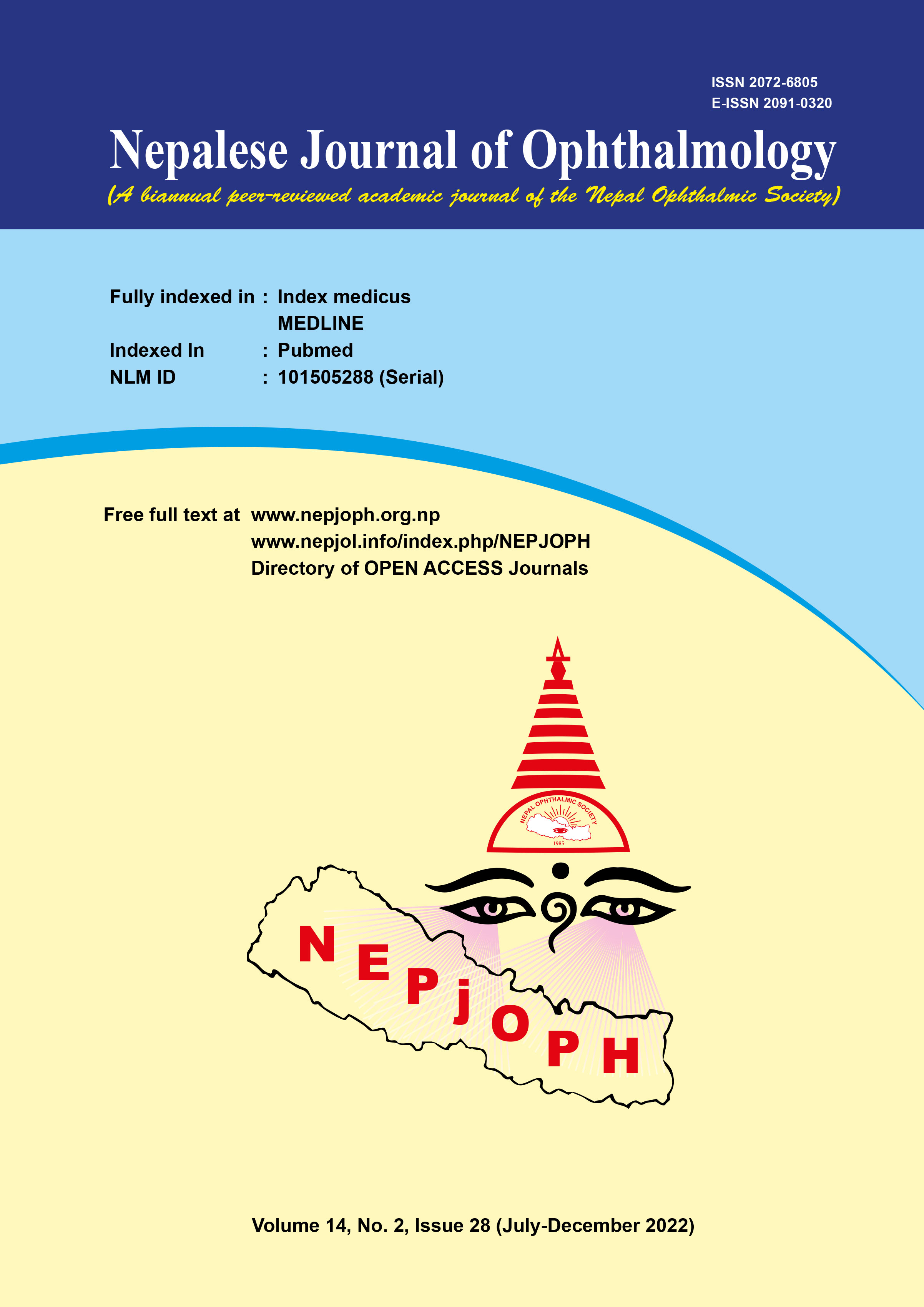Safety and efficacy of cyclosporine (0.05% versus 0.09%) in dry eye disease. Is it the strength of cyclosporin that really matters?
DOI:
https://doi.org/10.3126/nepjoph.v14i2.38928Keywords:
Aqueous solution, CAs, Dry eye disease, Emulsion, Lissamine Green stainingAbstract
Introduction: This is a multicenter, randomized, interventional, double masked study aimed to compare safety and efficacy of cyclosporine (0.05% versus 0.09%) in dry eye disease.
Materials and methods: Random allocation of patients (n=450) was done in two groups by parallel assignment (1:1). Group1(n=225) received CAs 0.05% drops twice daily, and group 2 (n=225) received CAs 0.09% drops twice daily for 3 months. Primary outcomes were changes from baseline in Lissamine green staining score, Nelson grade on conjunctival impression cytology and tear film osmolarity. Secondary outcomes were changes in dry eye symptom score. Schirmer’s test scores, changes in corneal fluorescein staining and changes in tear film break up time.
Results: Within the groups, there was a significant improvement (ANOVA, P<0.05) in tear film osmolarity, lissamine green staining score, dry eye symptom score, corneal fluorescein staining and Schirmer test scores over 3 months of intervention. However, the difference in Nelson Grade, goblet cell density, and tear film break-up time was not statistically significant. Between the groups, there was a significantly better improvement in tear film osmolarity (ANOVA, P<0.001), Lissamine green staining score (ANOVA, P=0.002), corneal fluorescein staining (ANOVA, P=0.011), dry eye symptoms (ANOVA, P=0.040) and Schirmer test scores (ANOVA, P=0.001) with CAs 0.09%. However, the improvement in Nelson grade, tear film break-up time was not significantly different between the two groups. The overall patient’s comfort was significantly better over time in patients on CAs 0.05% (ANOVA, P<0.001).
Conclusion: Increasing strength of CAs better improves corneal staining, tear production, tear film osmolarity but not conjunctival morphology and tear film stability.
Downloads
Downloads
Published
How to Cite
Issue
Section
License
Copyright (c) 2022 Nepalese Journal of Ophthalmology

This work is licensed under a Creative Commons Attribution-NonCommercial-NoDerivatives 4.0 International License.
This license enables reusers to copy and distribute the material in any medium or format in unadapted form only, for noncommercial purposes only, and only so long as attribution is given to the creator.




